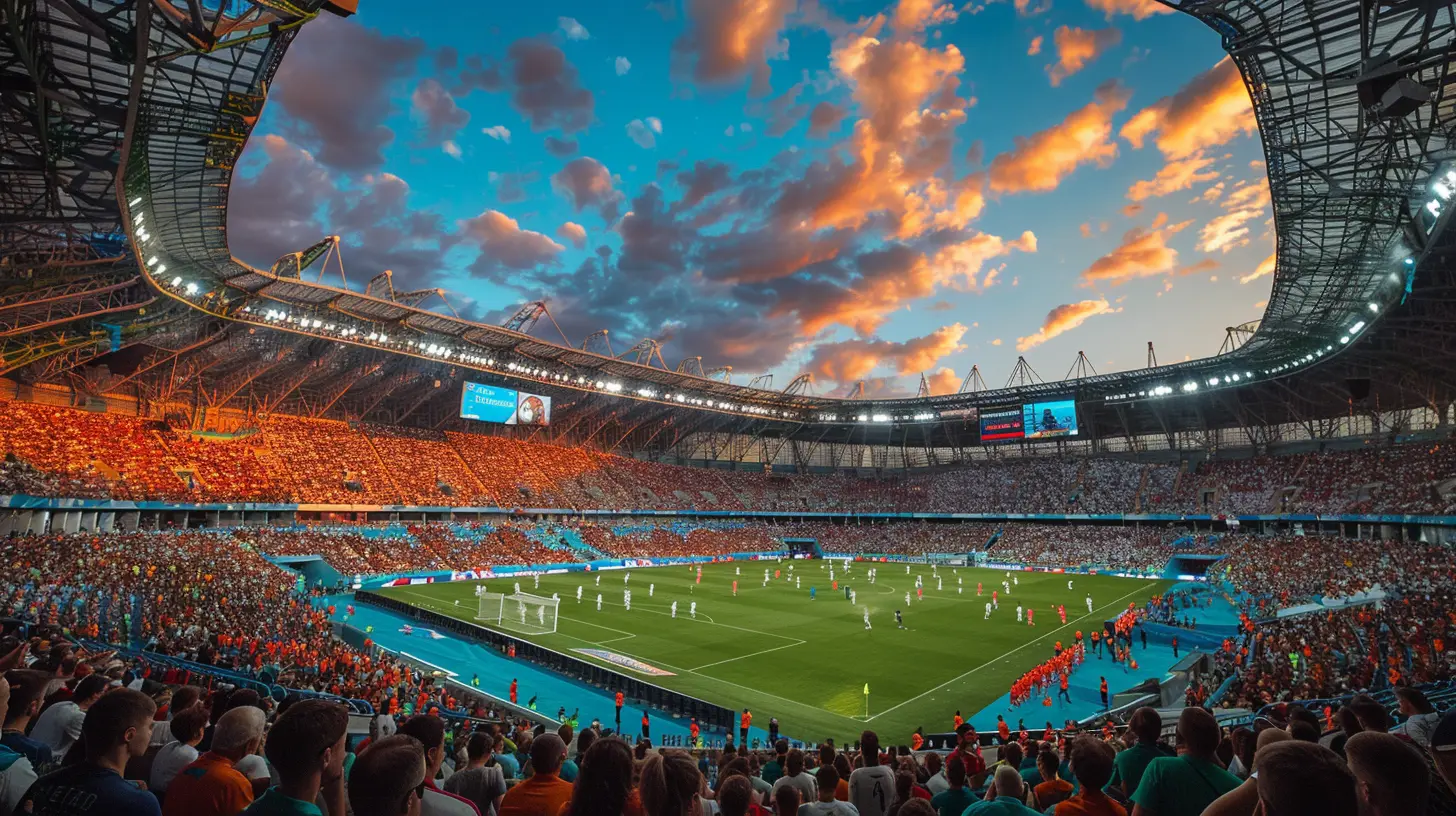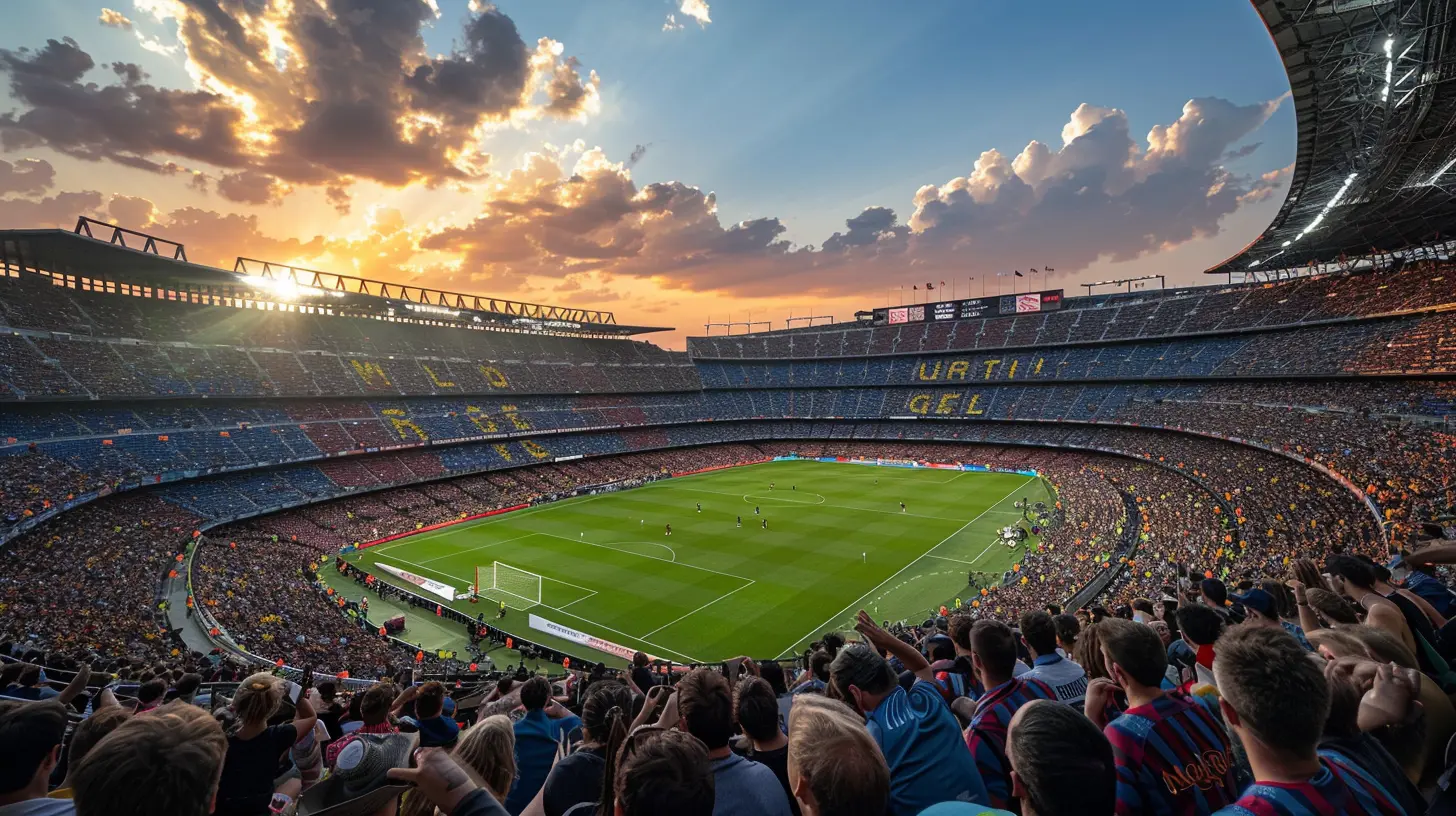10 December 2024
In recent years, the world of sports has undergone a massive transformation, not just in terms of athletic performance, but also in the way sponsorships are structured. The rise of sustainability as a global concern is seeping into every corner of the business world, and sports sponsorship agreements are no exception.
Fans, athletes, and corporations alike are recognizing that the future of sports isn't just about breaking records and winning championships—it's also about ensuring that we have a planet to continue playing on. The intersection of sports and sustainability is no longer just a trend; it's a movement. And it’s reshaping how sponsorship deals are negotiated, signed, and executed.

The Shift Towards Sustainability in Sports
You might be wondering, "Why is sustainability such a big deal in sports?" Well, think about it. Sports events, whether it's the Olympics, the FIFA World Cup, or even a local marathon, typically have a massive environmental footprint. From the energy used to power stadiums, to the waste generated by fans, to the travel emissions of athletes and spectators, the carbon toll can be staggering.Sponsors, who traditionally focused on visibility through banners, commercials, and merchandise, are now being asked to play a part in reducing this impact. In fact, many brands are realizing that consumers care deeply about sustainability, and aligning themselves with greener sports initiatives can boost their corporate image.
Consumer Demand is Driving Change
At the heart of this shift is consumer demand. Fans are becoming more eco-conscious, and they expect the brands they support to share those values. Millennials and Gen Z, in particular, are known for their preference for brands that demonstrate social responsibility. These younger generations are not just passive viewers; they are active voices calling for change.When a company sponsors a sports team or event, it’s not just about slapping a logo on a jersey anymore. Fans want to know: What is this brand doing to make the world a better place? How are they contributing to sustainability? It’s not enough to be a part of the conversation; brands need to lead it.

The Economic Benefits of Going Green
It’s not just about keeping the fans happy, though. There’s a real business case to be made for incorporating sustainability into sports sponsorship agreements. In fact, "going green" often leads to cost savings in the long run.Take energy efficiency, for example. Many stadiums and sports venues have started implementing solar panels, LED lighting, and other energy-saving measures. These improvements aren't just good for the environment—they also reduce operational costs over time. Sponsors who help fund these initiatives can benefit from the positive PR, while also showcasing their commitment to sustainability.
And it’s not just the venues. Sports teams themselves are also adopting greener practices, from using eco-friendly uniforms made from recycled materials to reducing their travel-related carbon footprint. Sponsors who support these initiatives are seen as forward-thinking and responsible, which can ultimately lead to stronger brand loyalty.
Sustainability as a Differentiator for Sponsors
In a competitive marketplace where thousands of brands are vying for attention, sustainability can be a key differentiator. Sports sponsorships are an opportunity for brands to showcase their values, and sustainability is quickly becoming one of the most important values in today’s marketplace.Consider this: If two companies are bidding to sponsor a major sports event, and one of them has a track record of supporting environmental initiatives, which one do you think is more likely to win the deal? In many cases, the brand with a focus on sustainability will come out on top.
This is especially true as governing bodies in sports are increasingly prioritizing sustainability. Events like the Olympic Games and the World Cup now have sustainability as a core part of their bidding process. Countries and cities that want to host these events must demonstrate how they plan to minimize their environmental impact. Sponsors that align with these goals are much more likely to secure high-profile deals.

Case Studies: Brands Leading the Way in Sustainable Sponsorships
Let's take a look at some real-world examples of brands that are making waves by embracing sustainability in sports sponsorships.1. Adidas and Parley for the Oceans
Adidas has long been a leader in the sports apparel industry, but they took their sustainability game to the next level by partnering with Parley for the Oceans, an organization that focuses on cleaning up marine plastic waste. Together, they’ve created a line of shoes and sportswear made from recycled ocean plastic.This partnership has been a win-win. Adidas gets to showcase its commitment to sustainability, while Parley gains a platform to raise awareness about ocean pollution. The collaboration has been so successful that Adidas has since expanded its use of recycled materials across multiple product lines. And guess what? Consumers love it.
2. Formula 1 and Its Net Zero Carbon Initiative
Formula 1, a sport synonymous with high-speed cars burning massive amounts of fuel, might seem like an unlikely candidate for sustainability. But in 2019, F1 announced an ambitious plan to achieve net-zero carbon emissions by 2030. This includes everything from cars running on sustainable fuels to reducing the carbon footprint of the entire race calendar.Sponsors who align themselves with F1’s sustainability goals are positioning themselves as forward-thinking brands. Companies like DHL, which already has its own green initiatives, are able to not only support the sport but also use the platform to highlight their own sustainability efforts.
3. Nike’s Move to Zero
Nike has been making some serious strides in sustainability with their “Move to Zero” campaign, which aims to achieve zero carbon and zero waste. They’ve invested in everything from renewable energy to eco-friendly production processes.Nike’s partnerships with athletes and sporting events often emphasize these sustainability goals. For example, the company regularly promotes its eco-friendly initiatives during major sporting events like the NBA Finals and the Olympics, showcasing their commitment to a greener future.

The Role of Athletes in Promoting Sustainability
It’s not just brands and event organizers that are getting in on the sustainability action. Athletes themselves are starting to use their platforms to promote environmental causes. This shift is particularly important because athletes are often seen as role models, and their influence extends far beyond the field or court.Take tennis star Naomi Osaka, for example. She’s used her platform to speak about climate change and the importance of protecting the environment. Similarly, Formula 1 driver Lewis Hamilton has been outspoken about the need for the sport to reduce its environmental impact. When athletes align themselves with sustainable sponsors, it creates a powerful synergy that resonates with fans.
Brands are recognizing the value of working with eco-conscious athletes, and many are structuring their sponsorship deals to include sustainability clauses. This trend is only expected to grow in the coming years.
The Future of Sustainability in Sports Sponsorships
So, what does the future hold for sustainability in sports sponsorship agreements? Well, one thing is clear: It’s not going away. In fact, it’s only going to become more important.As environmental regulations become stricter and consumers continue to demand greener practices, brands will need to step up their game. We can expect to see more sponsorship deals that include sustainability benchmarks, such as reducing carbon footprints, minimizing waste, and promoting renewable energy.
In addition, technology will play a crucial role in advancing sustainability in sports. From smart stadiums that use AI to optimize energy usage, to blockchain technology that tracks carbon offsets, the possibilities are endless. Sponsors that invest in these technologies will not only help protect the planet but also position themselves as leaders in the industry.
Greenwashing: A Pitfall to Avoid
However, there’s a potential pitfall that both sponsors and sports organizations need to be aware of: greenwashing. This is when a company exaggerates or falsely claims to be environmentally friendly. Fans are savvy, and they can see through empty promises. Brands that engage in greenwashing risk damaging their reputation.To avoid this, sponsors need to ensure that their sustainability efforts are genuine and measurable. It’s not enough to talk the talk—they need to walk the walk. Transparency is key. By being honest about their efforts and progress, sponsors can build lasting trust with fans and consumers.
Conclusion
The growing role of sustainability in sports sponsorship agreements is undeniable. As fans become more aware of environmental issues, they expect the brands they support to share their values. For sponsors, this presents both a challenge and an opportunity. Those that embrace sustainability as a core part of their sponsorship strategy will not only gain the loyalty of eco-conscious consumers but also position themselves as leaders in the industry.From Adidas turning ocean plastic into sportswear, to Formula 1’s ambitious net-zero carbon goals, we’re seeing real-world examples of how sustainability can transform sponsorships. As we look to the future, it’s clear that sustainability isn’t just a passing trend—it’s the future of sports sponsorship.












Zinn Thornton
Great insights! Emphasizing sustainability in sponsorships not only benefits the environment but also enhances brand loyalty among eco-conscious consumers.
February 17, 2025 at 4:54 AM